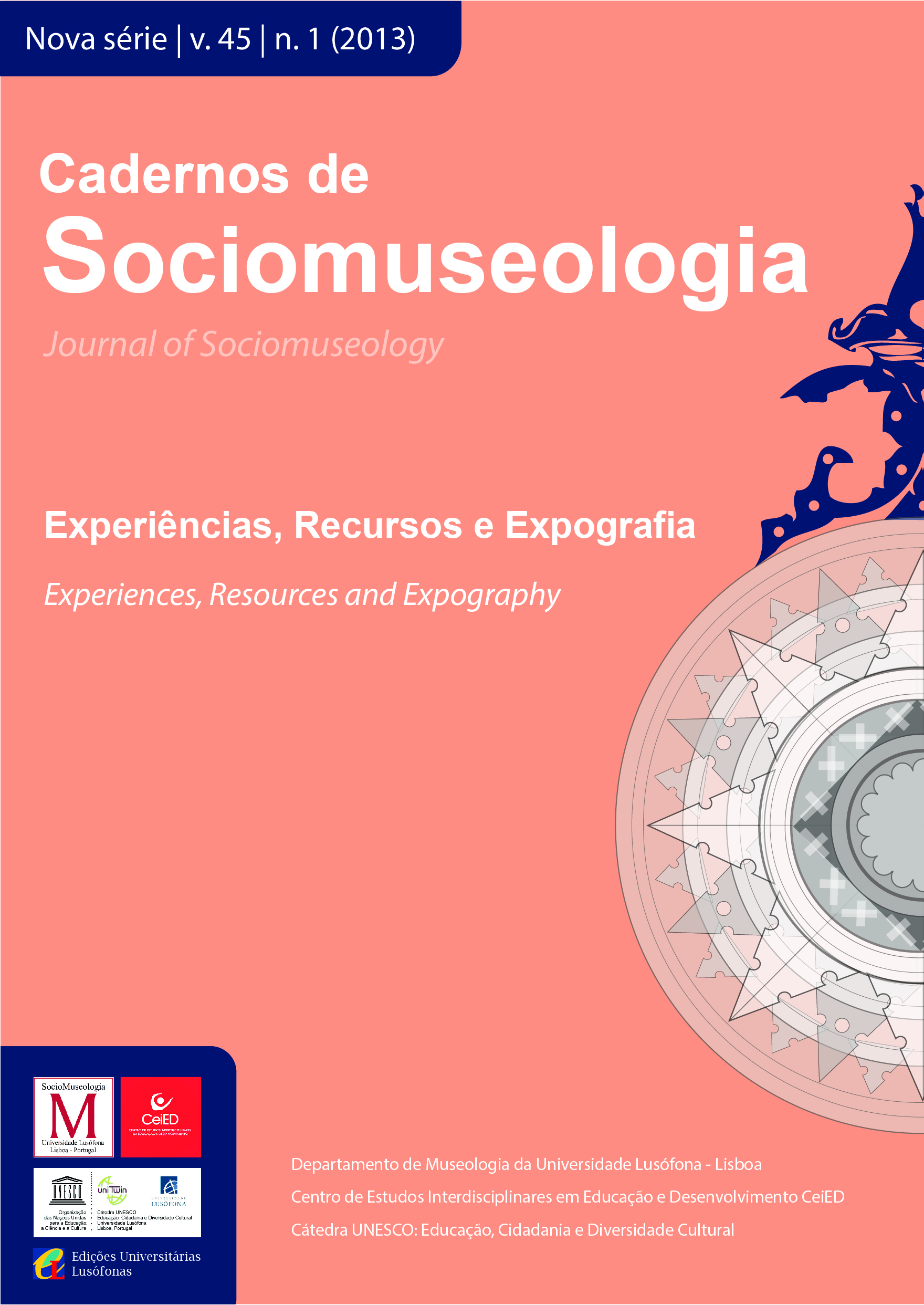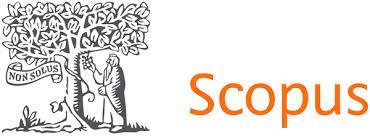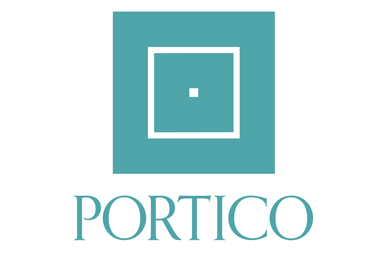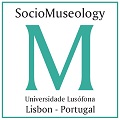O turismo e os museus nas estratégias e nas práticas de desenvolvimento territorial - Fernando J. Moreira
Resumo
O turismo e os museus nas estratégias e nas práticas de desenvolvimento territorial
Tese de Doutoramento na Especialidade de Museologia de Fernando João de Matos Moreira (2008)
Orientador: Professor Doutor Mário Moutinho
RESUMO
O objecto de estudo definido para este trabalho é estruturado pelas relações triangulares estabelecidas ao longo dos eixos do tempo e do espaço entre desenvolvimento territorial, turismo e museus.
A problematização da geometria dessas relações levou ao estabelecimento de um conjunto limitado de hipóteses de partida, as quais serviram de fio condutor ao desenvolvimento da pesquisa. Duas hipóteses principais, embora de alcance diferenciado, foram definidas:
a) Num plano mais geral - As orientações e as dinâmicas do desenvolvimento territorial (nas suas vertentes económicas, políticas, sociais e culturais) têm uma correspondência evidente nas transformações verificadas no âmbito do turismo e dos museus, quer em termos conceptuais, quer ao nível das práticas.
b) Num plano mais específico - Os museus podem contribuir para a definição de um novo modelo de desenvolvimento turístico com fortes implicações ao nível da coesão territorial e social.
No sentido de melhor operacionalizar as hipóteses de partida, as mesmas foram traduzidas num conjunto de questões que lhes estão intimamente associadas. Destas salientamos: i) Quais as relações entre desenvolvimento, turismo e museus? No plano teórico? Nas práticas? Ao longo do período analisado? Nas várias escalas de análise consideradas? ii) Qual o papel específico dos museus no quadro de um novo modelo de desenvolvimento turístico susceptível de promover o progresso e o bem-estar das comunidades locais (o seu desenvolvimento) numa perspectiva integrada?
Neste quadro de referência, o trabalho foi organizado em três partes, a primeira, incidindo sobre a discussão do triângulo turismo, museus e desenvolvimento territorial em contextos teórico-conceptuais diferentes dos pontos de vista temporal e espacial; a segunda, incidindo sobre o estudo de caso tendo em mente testar, ao nível local e numa realidade concreta, a matriz teórica e conceptual entretanto estabelecidas; a terceira, incorporando uma junção das conclusões parciais obtidas anteriormente e uma avaliação das hipóteses colocadas inicialmente.
Tendo por referência que o conceito de desenvolvimento tem experimentado alterações de monta ao longo do tempo, desde uma dimensão inicial fundamentalmente económica, até uma perspectiva holística de bem estar, que engloba as vertente sociais e da justiça societária, a liberdade de acção e de pensamento e a criatividade, definimos cinco modelos (4+1) de desenvolvimento como referenciais da nossa análise: o modelo da modernização, o da dependência, o liberal, o complexo de modelos chamados alternativos e, entre estes últimos, o Integrated Area Development.
Cada um destes modelos foi caracterizado e discutido tendo, posteriormente, sido relacionados com o desenvolvimento do turismo e das concepções (e práticas) museológicas. Através deste exercício, foi possível perceber muitas das alterações que se foram registando ao longo do tempo e do espaço.
Posteriormente, adoptando uma visão holística para contextualizar os factos na realidade que integram, organizou-se um estudo de caso empírico, em parte dentro de uma óptica “laboratorial”. O estudo de caso incide no Concelho de Silves, porque: i) detém um percurso longo de desenvolvimento turístico em torno da freguesia de Armação de Pêra; ii) é suporte de um número considerável de experiências museológicas; iii) é um concelho extenso e, sobretudo, com territórios encerrando características naturais e humanas diversas e com forte potencial de complementaridade; iv) é um concelho-chave da Região em que se insere, já porque integra o grande arco urbano-turístico transversal do Litoral e do Barrocal algarvio, já porque estabelece a ligação longitudinal entre a Serra o Litoral e entre o Algarve e o Alentejo.
O percurso analítico adoptado permitiu concluir que as estratégias inerentes ao modelo de desenvolvimento turístico de Silves são pouco consistentes e coerentes, existindo contradições significativas entre os discursos e as práticas e orientações pouco articuladas que não prefiguram uma estratégia consistente.
Por outro lado, verificou-se, igualmente, que num quadro de uma procura turística muito diversificada, os museus do Concelho conservam uma atitude passiva e distante face à população local, mas também face à motorização de um novo turismo, mais baseado nas especificidades culturais e ambientais locais, mais qualificado e mais diversificado.
Apesar destes défices, nos últimos anos as autoridades locais vêm encarando as actividades culturais e os museus, em particular, como um recurso importante do desenvolvimento local.
Na conclusão geral retomam-se as hipóteses de partida sendo avaliados os diversos aspectos que as constituem. Globalmente, foi possível concluir que se confirmam as relações entre os modelos de desenvolvimento territorial, com o turismo e a museologia, embora com “ruídos” e “desfocagens” à medida que nos afastamos dos aspectos mais associados à economia e sempre que aumentamos a escala de análise, aproximando-nos da escala local.
Quanto aos museus como motor de novos modelos de desenvolvimento turístico, ainda há um longo caminho a percorrer, sobretudo no campo da oferta e, mais especificamente, na adopção de uma atitude pró-activa e articulada com as outras ofertas culturais, na óptica da coesão do território e das comunidades.
Palavras-Chave: Museologia, Turismo, Território, Desenvolvimento
ABSTRACT
The object of the research underlying this thesis consists of the triangular relationships between territorial development, tourism and museums, as regarded from a both spatial and temporal perspective.
The specific way in which the geometry of these relationships was conceptualised led to putting forth a limited set of provisional hypotheses, which in turn served as a road map in the subsequent development of the research. Two main hypotheses were thus laid out at two different levels:
a) At a more general level - An obvious correspondence, both in conceptual terms and at the level of practices, can be found between the aims, dynamics and guidelines that drive and characterise territorial development (in its economic, political, social and cultural dimensions) and the changes that take place within the ambit of tourism and museums.
b) At a more specific level - Museums can contribute significantly to the definition of a new model of tourism development, which has considerable implications in terms of social and territorial cohesion.
In order to provide these research hypotheses with a workable operational content, they were then converted into a set of closely related research questions. Among these questions, it is especially important to highlight the following: (i) In what ways are development, tourism and museums related? Theoretically? At the level of practices? Throughout the period under analysis? At the various geographical scales considered herein? (ii) What specific roles do, and can, museums play in the context of a new model of tourism development that is better suited to promoting the progress and well-being of the local communities (i.e. their development) in an integrated perspective?
In accordance with this framework, the research was divided into three different parts: the first one consisted of a discussion of the “tourism-museums-territorial development” triangle, as regarded from a both spatial and temporal perspective and in accordance with different theoretical-conceptual traditions; the second one relied on case-study methodology in order to test, at the local level and in a concrete context, the theoretical and conceptual framework previously put forth; and the third part consisted of an attempt to bring together the partial conclusions from the previous two parts in order to assess and possibly validate the hypotheses that had been initially laid out.
The concept of development has taken on a variety of different meanings in the debates that have taken place over the last few decades, from an initial definition with an essentially economic content to the current holistic view of development as an expansion of well-being, societal justice, freedom to think and act and creativity. Five (4+1) conceptual models of development were thus identified: the modernization model, the dependency model, the liberal model, the cluster of models broadly characterised as “alternative” and among the last ones the Integrated Area Development model.
Each of those models was thus characterised, analysed and, at a later stage, laid out in its relation to tourism development and to museological paradigms and practices. This “crosstabulation” exercise allowed for a better understanding of many of the changes that have taken place across both time and space.
Subsequently, through the adoption of a holistic outlook aimed at contextualizing the facts in the broader reality of which they are a part, an empirical case-study was undertaken that partially sought to adopt “experimental science” procedures. The selection of the case-study area (the municipality of Silves, in the Portuguese region of Algarve) was due to the following reasons: (i) this territory has a history of tourism development that goes back a long way and which has traditionally been polarised by the coastal area of Armação de Pera; (ii) a significant number of museological “experiences” have been implemented in this municipality; (iii) it is a large municipality characterised by significantly diverse, and potentially complementary, natural and human characteristics; (iv) it is a key component of the Algarve region, both because it is a part of that region’s longitudinal urban-tourist axes, which run along the littoral and the intermediate hinterland, and because it provides a transversal linkage between the littoral and the hills, the Algarve and the Alentejo.
The analytical roadmap adopted in the case-study brought to light the lack of consistence and coherence that has characterised Silves’ local strategies in the area of tourism development. Significant contradictions were found between discourse and practice, as well as ad-hoc policy guidelines that are indicative of an inappropriate strategy.
Moreover, it was also apparent that, in a context of increasingly diversified tourism demand, the various museums in the municipality have remained passively detached both from the local population and from the possibility of encouraging new tourist patterns that draw on the local cultural and environmental specificities in order to achieve higher standards of quality and diversity.
Despite these insufficiencies, it should be stressed that the local authorities have over the past few years begun to regard cultural activities, and museums in particular, as important and strategic resources in terms of local development.
In the overall conclusion to the thesis (third part), an assessment is made of the initial research hypotheses by examining each of their constitutive elements. Generally speaking, the evidence confirms the hypothesised relationships between the dominant territorial development models and the dynamic development of tourism and museums. However, these relations are much clear and more immediate in the economic sphere - i.e. with respect to the linkages between development models and tourism activities – than in the specifically cultural field – i.e. as regards the relationships between development models and museological dynamics. Moreover, the relationships also seem to be significantly weaker at the local scale than at the regional, national or global scales. The idea of museums as engines of new models of tourism development still has a long way to go - namely in terms of improving and upgrading the service supply and, more specifically, as regards the adoption of a pro-active and cooperative approach that draws upon the complementary character of the various different forms of cultural supply in order to advance social and spatial cohesion.
Keywords: Museology, Tourism, Territory, Development
Downloads
Política para Periódicos de Acesso Livre
Autores conservam os direitos de autor e concedem à revista o direito de primeira publicação, com o trabalho simultaneamente licenciado sob a Licença Creative Commons Attribution que permite a partilha do trabalho com reconhecimento da autoria e publicação inicial nesta revista.













